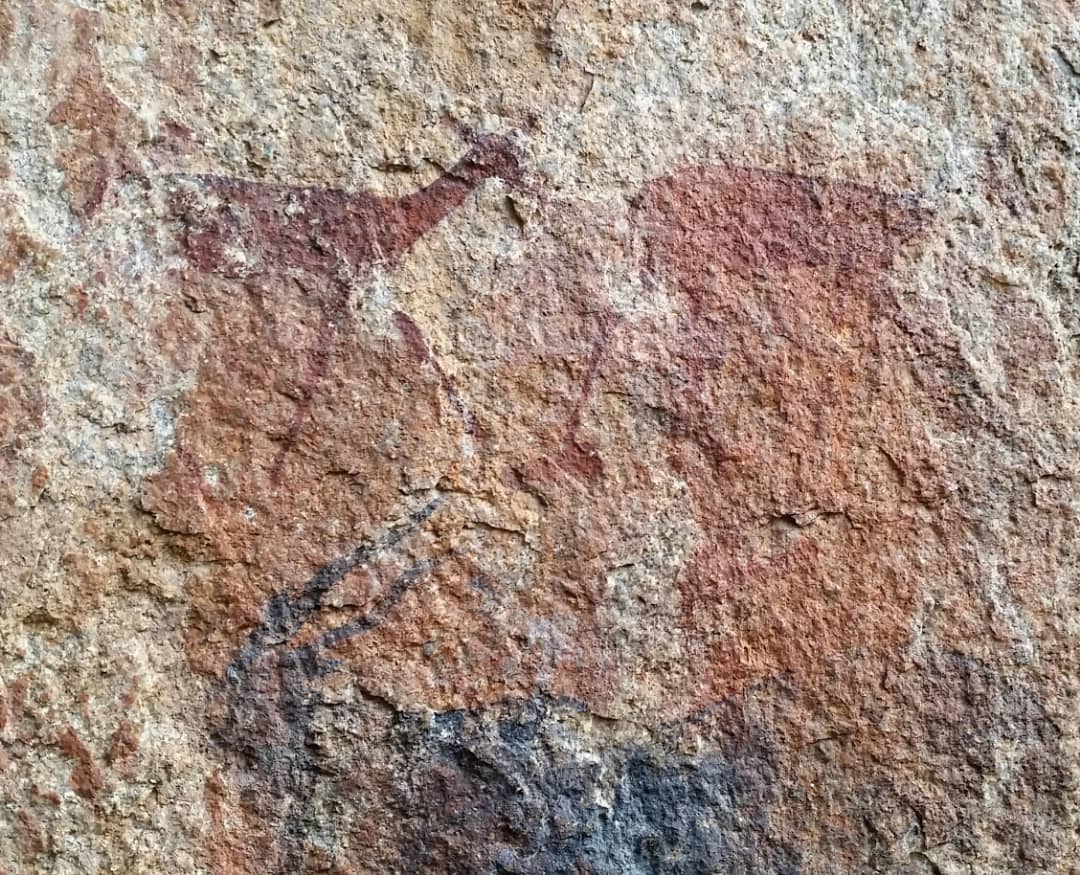By Nimrod Ushe
A fascinating Stone Age habitat has been reported to the Spiked Online Media by one of the denizens in Bikita District. It is situated approximately three kilometres south-west of Mandadzaka Shopping Centre in Munatsi Village and adjacent to Musaizi river.
Speaking to Spiked Online Media, Allan Muridzo said that “There is a cave-dwelling which embodies some delightful archaeological findings of the Bushman such as stone tools, wild animal bones, pottery relics, and rock art paintings.”
Indispensable stone assemblages such as cores, crescents, hammerstones and points were successfully unearthed in Mandadzaka.
But, a smaller number of stone tools in Mandadzaka are fraught with controversy as they have appeared with traces of paint that probably was used by the Bushman/Khoisan. Moreover, it was puzzling to document a few numbers of scrappers which emerges as if they were purposefully burned on the fire.
Besides stone equipment, remains of fossilised wild animal bones were easily seen scattered around the rock shelters. It might be concluded that the Khoisan engaged in various economic activities such as hunting and gathering of edible fruits, berries, roots and ants in Mandadzaka.
A few numbers of potsherds in Mandadzaka were also detected with a blackened surface resulting from cooking using fire. And some of the pottery fragments contain decoration impression of comb stamping, incision, and rocking.
In some parts of North and Southern Africa, the (LSA) era was associated with ceramic making, advent crop production, pastoralism, and permanent settlements.
Also, impressive rock art paintings in Mandadzaka were executed in solids, stripes, and outlines by the painters. And the principal colours that survived were red ochre, purple and black. Humans were painted on standing posture, procession, and hunting positions. Unfortunately, some of the images at the site are now blotted on the rock walls.
Aesthetic scenes also came from plants, geometric objects and wild animals painted at the locale. Male kudu is an interesting exception in Mandadzaka and they were rarely featured in most rock art sites across the country.
Notably, rock art in Mandadzaka seems not to be constrained to stone painting using animal blood only. Khoisan artists might have used glue or resin which was smeared on the opposite walls of the main rock art panel. Such kind of resin created a unique colour and a smooth surface, which perhaps was another form of rock painting.
Also, Mandadzaka’s site was associated with burial ground probably of the hunting-foraging groups. At the lowermost side of the rock art, there is a burial mound that can be equated to a tomb. Nonetheless, that needs to be substantiated through archaeological excavation.
Separated from Mandadzaka, Zimbabwe possesses classical examples of rock art sites such as Matopo’s World Heritage Site, Domboshava and Chamavara National Monuments just to cite a few.
Nevertheless, Muridzo disclosed that “Mandadzaka’s site is currently struggling with multifaceted preservation challenges. Chief among them, negligence from traditional managers and the place is heavily spoiled with vegetation overgrowth and mice traps (mariva).”
Besides that, the weathering process appears to be causing conservation problems because the parent rock is spilling off from the rock art site.
Additionally, “Mandadzaka conservation woes seems to have been worsened by the flash floods of Cyclone Idai in 2019. The torrential rains appear to have left massive watermarks on the rock art surface” Muridzo told Spiked Online Media.
All in all, the stone site in Mandadzaka is equally important for understanding the earliest evidence of the human occupation in the country. Moreover, the stone age site can be utilised for archaeological investigations, educational tours, and sightseer visits.






